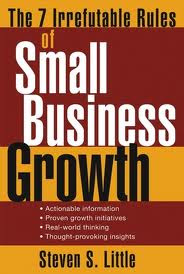The previous versions of Encarta included a host of homework tools. These have now been made into a separate product called Microsoft Student.
Homework assignments are the bane of most students I know (not to mention their hard-pressed and nescient parents). This is mainly because of the tedious and mind-numbing chores of data mining and composition. Additionally, as knowledge multiplies every 5-10 years, few parents and teachers are able to keep up.
Enter Microsoft Student 2006 - a productivity suite which includes the Encarta Encyclopedia, assignment templates, tutorials, graphing calculator software and a Web Companion.
Similar to the Encarta, MS Student's Web Companion obtains search results from all the major search engines without launching any additional applications (like a browser). Content from both the Encyclopedia (the full Encarta encyclopedia is built into MS Student) and the Web is presented side by side. This augmentation explicitly adopts the Internet and incorporates it as an important source of reference - as 80% of students have already done.
This may raise important and interesting issues of intellectual property, though. Web content copyright-holders may demand royalties from Microsoft for the use it makes of their wares in its commercial products.
MS Student would do well to also integrate with new desktop search tools from Google, Microsoft, Yahoo, and others. Students will benefit from seamless access to content from all over - their desktop, their encyclopedias, and the Web - using a single, intuitive interface.
MS Student's templates are actually clever adaptations of the popular Office suite of products - Word, Excel, and PowerPoint. They help the student produce homework plans and schedules, projects, book reports, presentations, research reports, charts, and analyses of problems in math, physics, and chemistry. Detailed step-by-step tutorials, Quick Starters, and pop-up toolbars (menus) guide the student along the way in a friendly, non-intrusive manner.
The graphing calculator is a wonder. It has both 2-D and 3-D capabilities and makes use of the full screen. Aided by an extensive Equations Library, it does everything except cook: trigonometry, calculus, math, charting, geometry, physics, and chemistry. And everything in full color!
And if this is not enough, the lucky owner is entitled to one year of Online Math Homework Help: step by step instructions and hints for solving math problems (including algebra and geometry). The program addresses most math textbooks and more are added all the time.
For the student keen on the liberal arts and the humanities, Student 2006 provides detailed Book Summaries of dozens of classic works. Besides plot synopses, the student gets acquainted with the author's life, themes and characters in the tomes, and ideas for book reports. This is buttressed by a Book of Quotations and the entire corpus of the Encarta Encyclopedia, dictionary, and thesaurus.
This is the first release of a great contribution to learning. Inevitably, it has a few flaws and glitches.
Start with the price. As productivity suites go, it is reasonably priced had its target population been adult professional users. But, at $100, it is beyond the reach of most poor students and parents - its most immediate market niches.
Installation is not easy. MS Student 2006 makes use of Microsoft's .Net technology. As most home computers lack it, the installer insists on adding it to the anyhow bloated Windows Operating System. There is worse to come: the .Net version installed by Encarta 2006 is plagued with security holes and vulnerabilities. Users have to download service packs and patches from Windows Update if they do not wish to run the risk of having their computers compromised by hackers.
Fully installed, Microsoft Student 2006 gobbles up more than 4 Gb. That's a lot - even in an age of ever cheaper storage. Most homesteads still sport PCs with 20-40 Gb hard disks. This makes the Encarta less suitable for installation on older PCs and on many laptops. Despite the hype, relatively few users possess DVD drives (but those who do, find the entire encyclopedia available on one DVD).
Finally, there is the question of personal creativity and originality. Luckily, MS Student does not spoon-feed its users. It does not substitute for thinking or for study. On the contrary, by providing structured stimuli, it encourages the student to express his or her ideas. It does not do the homework assignments for the student - it merely helps rid them of time-consuming and machine-like functions. And it opens up to both student and family the wonderful twin universes of knowledge: the Encarta and the Web.





















